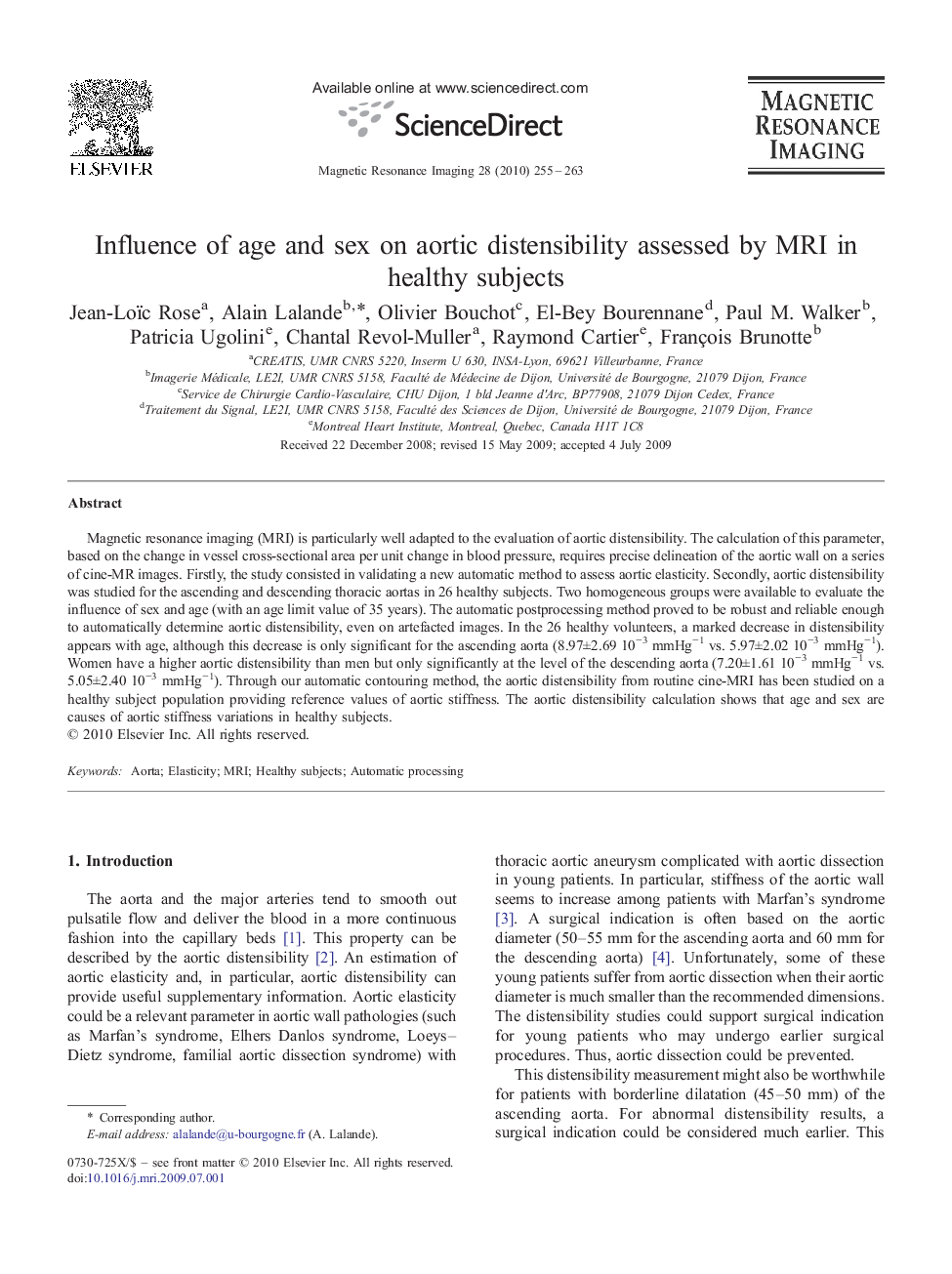| Article ID | Journal | Published Year | Pages | File Type |
|---|---|---|---|---|
| 1807068 | Magnetic Resonance Imaging | 2010 | 9 Pages |
Magnetic resonance imaging (MRI) is particularly well adapted to the evaluation of aortic distensibility. The calculation of this parameter, based on the change in vessel cross-sectional area per unit change in blood pressure, requires precise delineation of the aortic wall on a series of cine-MR images. Firstly, the study consisted in validating a new automatic method to assess aortic elasticity. Secondly, aortic distensibility was studied for the ascending and descending thoracic aortas in 26 healthy subjects. Two homogeneous groups were available to evaluate the influence of sex and age (with an age limit value of 35 years). The automatic postprocessing method proved to be robust and reliable enough to automatically determine aortic distensibility, even on artefacted images. In the 26 healthy volunteers, a marked decrease in distensibility appears with age, although this decrease is only significant for the ascending aorta (8.97±2.69 10−3 mmHg−1 vs. 5.97±2.02 10−3 mmHg−1). Women have a higher aortic distensibility than men but only significantly at the level of the descending aorta (7.20±1.61 10−3 mmHg−1 vs. 5.05±2.40 10−3 mmHg−1). Through our automatic contouring method, the aortic distensibility from routine cine-MRI has been studied on a healthy subject population providing reference values of aortic stiffness. The aortic distensibility calculation shows that age and sex are causes of aortic stiffness variations in healthy subjects.
